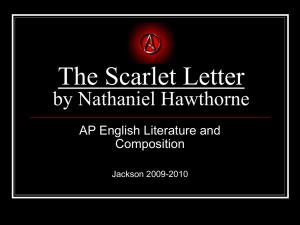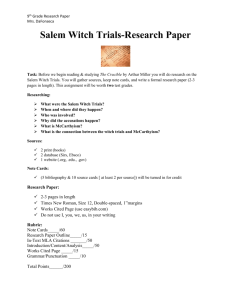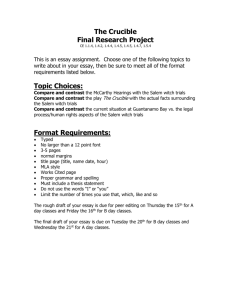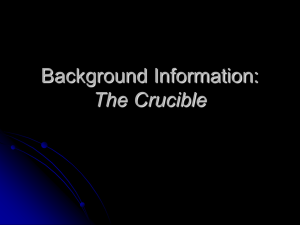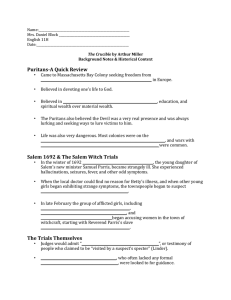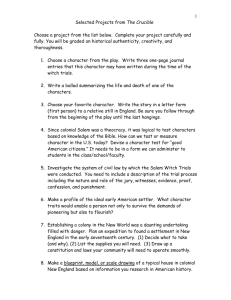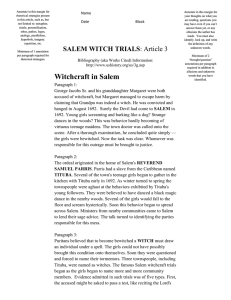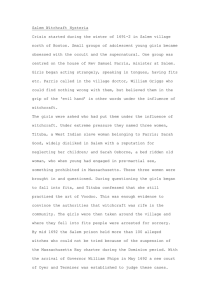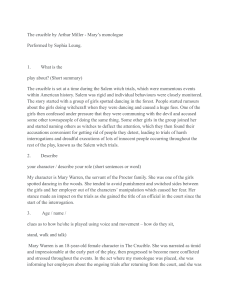History Repeating
advertisement
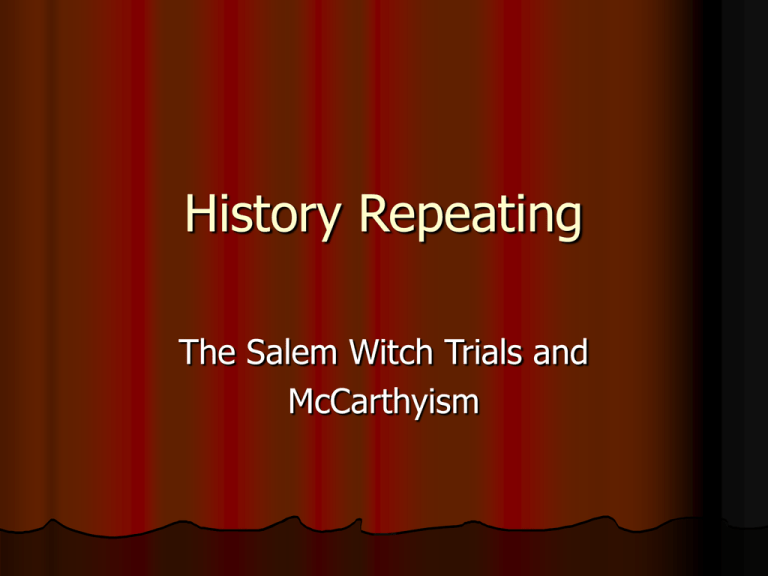
History Repeating The Salem Witch Trials and McCarthyism Salem, 1692 Massachusetts charter revived in 1692 after 8 years of infighting with local Indians New governor, William Phips, sworn in early that year Political confusion and unrest created uncertain judicial environment Separate church congregation of Salem (independent theocracy) 17th century Christianity Puritanism: Predestination (group of “elect” will go to heaven; no way of knowing if you are) God and angels live in an invisible world Church ruled in all civil matters Cotton Mather, Memorable Providences Relating to Witchcrafts and Possessions Malleus Maleficarum (1486) 17th century Feminism Women were supposed to be subservient in all matters Children were seen and not heard; girls trained to be servants to fathers, husbands Women were considered lustful by nature and more likely to join the Devil’s service Secrets were poorly kept in the small community and gossip taken as fact The Beginning Abigail Williams (11) and her cousin Betty Parris (9), the niece and daughter of Salem’s Reverend Samuel Parris, began experiencing fits: “The girls screamed, threw things about the room, uttered strange sounds, crawled under furniture, and contorted themselves into peculiar positions. The girls complained of being pinched and pricked with pins.” No physical explanation for the symptoms The Accusations More girls began experiencing afflictions Three women accused of bewitching the children: Sarah Good: A poor beggar woman Sarah Osborne: Rarely attended church and had married her indentured servant Tituba: Caribbean slave of Rev. Parris 62 accusations by end of May, 1692 The Trials Reliance on spectral evidence; testimony of the girls Spectral evidence: Witch sent her spirit to torment her accusers Women often failed to make their cases as the girls’ screaming overtook the court The Executions Witches were hanged if convicted. 150 people arrested, 29 convicted, 19 hanged Giles Corey was pressed to death for refusing to enter a plea At least five died in prison The Aftermath State of Massachusetts issued a formal apology Salem Witch Trials memorial park built Medical Theories: Bird-borne encephalitis Claviceps purpurea fungus Modern historians focus less on the medical theory and more on social factors Anti-Communism In the 1940s and 50s, anti-Communist feeling ran high in the US Rise of the Soviet Union, Allied victory in WW2 and suspicion of atomic bombs “Red Scares” beginning in 1917-20, people suspected others of being Communists and testified against each other Joseph McCarthy Lincoln Day Speech, 1950: Claimed to have a list of known Communists in the government Rose to power as the leader of the House Un-American Activities Committee Worked closely with FBI’s J. Edgar Hoover to expose Communists in government Communist Trials Julius and Ethel Rosenberg (1950): Charged with stealing atomic bomb secrets and executed Alger Hiss (1950): Guilty of espionage, perjury Klaus Fuchs (1950): Admitted to spying for USSR while working on the Manhattan Project Hollywood Blacklist: Actors, producers, directors, etc. who were not able to find work because they were labeled Communist sympathizers Arthur Miller and his Crucible cast were on the list Similarities Both trials based on flimsy evidence (primarily testimony) Both targeted prominent members of society in the end Both exploited the collective fears of a community


